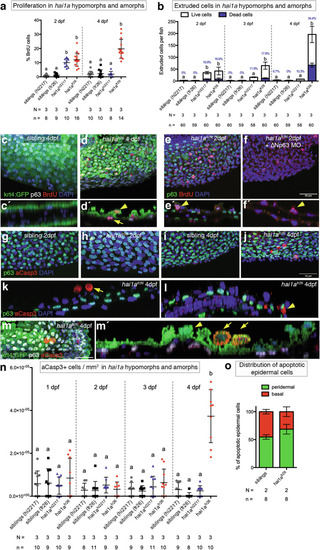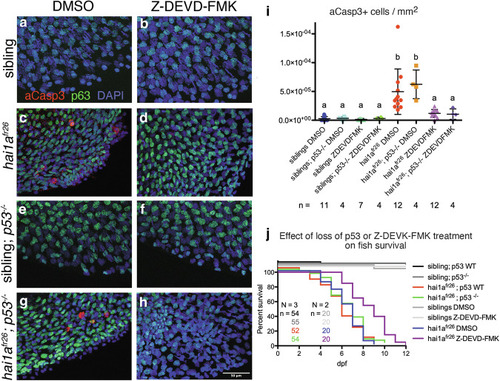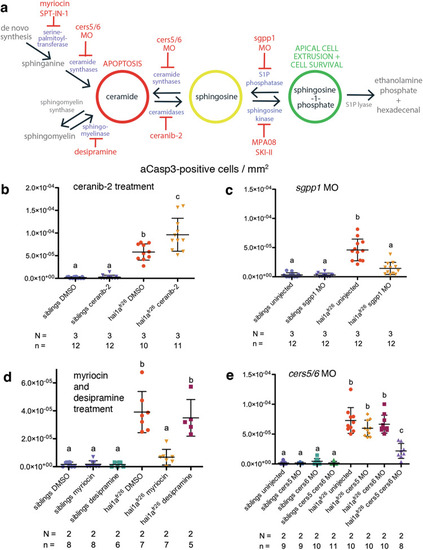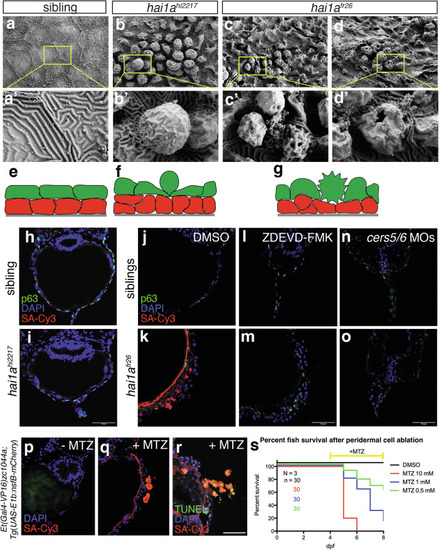- Title
-
A sphingolipid rheostat controls apoptosis versus apical cell extrusion as alternative tumour-suppressive mechanisms
- Authors
- Armistead, J., Höpfl, S., Goldhausen, P., Müller-Hartmann, A., Fahle, E., Hatzold, J., Franzen, R., Brodesser, S., Radde, N.E., Hammerschmidt, M.
- Source
- Full text @ Cell Death Dis.
|
Comparison of proliferation, apical cell extrusion, and apoptosis phenotypes in the |
|
Cell death in |
|
Sphingosine kinase activity modulates cell death in |
|
Manipulation of the sphingolipid rheostat enzymes or ceramide de novo synthesis alters cell death in the |
|
Early inhibition of ceramide synthesis in wild-type embryos recapitulates ACE and apoptosis phenotype. |
|
Embryo death is caused by apoptosis-induced loss of epidermal barrier. |






